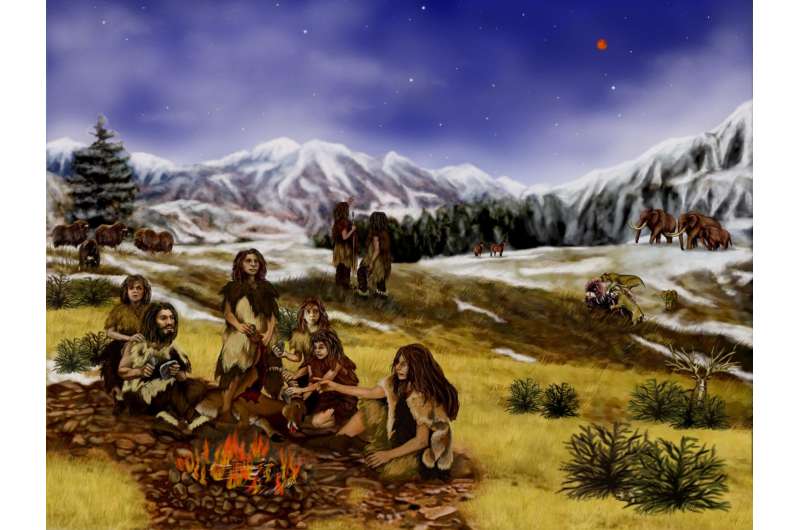Declining fertility rates may explain Neanderthal extinction, suggests new model

A new hypothesis for Neanderthal extinction supported by population modelling is put forward in a new study by Anna Degioanni from Aix Marseille Université, France and colleagues, published May 29, 2019 in the open-access journal PLOS ONE.
The lack of empirical data allowing testing of hypotheses is one of the biggest challenges for researchers studying Neanderthal extinction. Many hypotheses involve catastrophic events such as disease or climate change. In order to test alternative hypothetical extinction scenarios, Degioanni and colleagues created a Neanderthal population model allowing them to explore demographic factors which might have resulted in declining populations and population extinction over a period of 4,000-10,000 years (a time frame compatible with known Neanderthal history). The researchers created baseline demographic parameters for their Neanderthal extinction model (e.g. survival, migration, and fertility rates) based on observational data on modern hunter-gatherer groups and extant large apes, as well as available Neanderthal paleo-genetic and empirical data from earlier studies. The authors defined populations as extinct when they fell below 5,000 individuals.
The authors saw that in their model, extinction would have been possible within 10,000 years with a decrease in fertility rates of young (<20 year-old) Neanderthal women of just 2.7 percent; if the fertility rate decreased by 8 percent, extinction occurred within 4,000 years. If this decrease in fertility was amplified by a reduction in survival of infants (children less than one year old), a decrease in survival of just 0.4 percent could have led to extinction in 10,000 years.
The authors intended to explore possible Neanderthal extinction scenarios rather than to posit any definitive explanation. However, the researchers note that this study is the first to use empirical data to suggest that relatively minor demographic changes, such as a reduction in fertility or an increase in infant mortality, might have led to Neanderthal extinction. The authors note that modelling can be a useful tool in studying Neanderthals.
The authors add: "This study of the disappearance of the Neanderthals published today in PLOS ONE does not attempt to explain "why" the Neanderthals disappeared, but to identify "how" their demise may have taken place. This original approach is made on the basis of demographic modeling. The results suggest that a very small reduction in fertility may account for the disappearance of the Neanderthal population. According to this research, this decrease did not concern all female Neanderthals, but only the youngest (less than 20 years old)."
More information: Degioanni A, Bonenfant C, Cabut S, Condemi S (2019) Living on the edge: Was demographic weakness the cause of Neanderthal demise? PLoS ONE 14(5): e0216742. doi.org/10.1371/journal.pone.0216742
Journal information: PLoS ONE
Provided by Public Library of Science



















